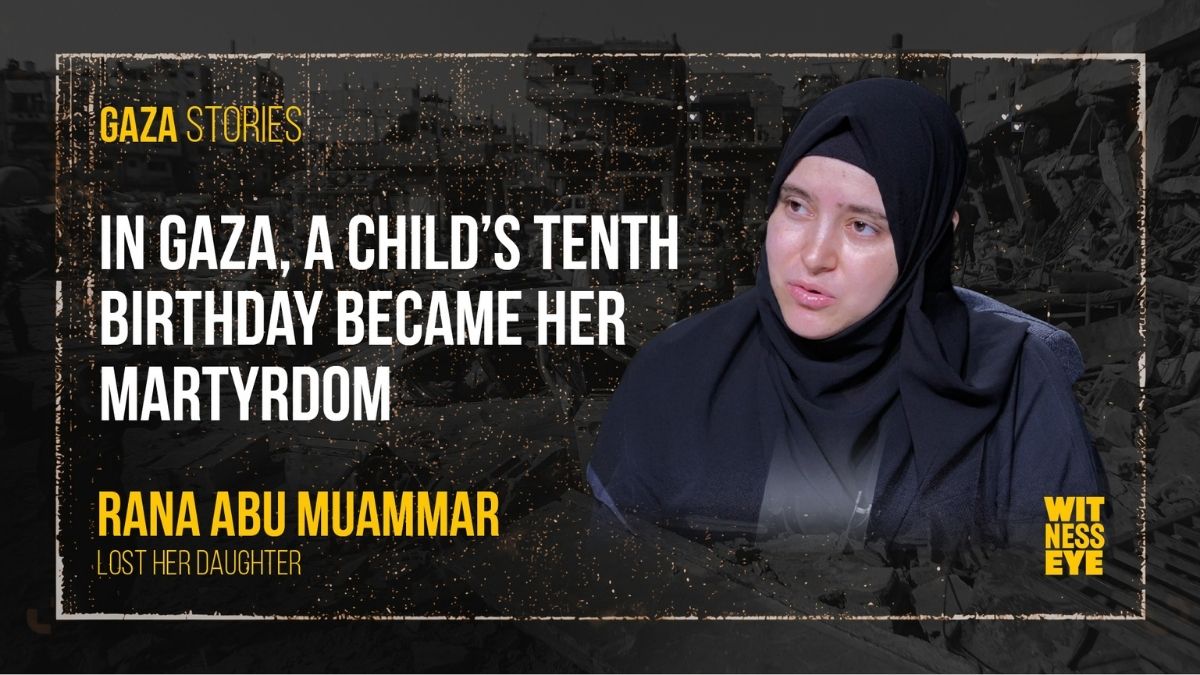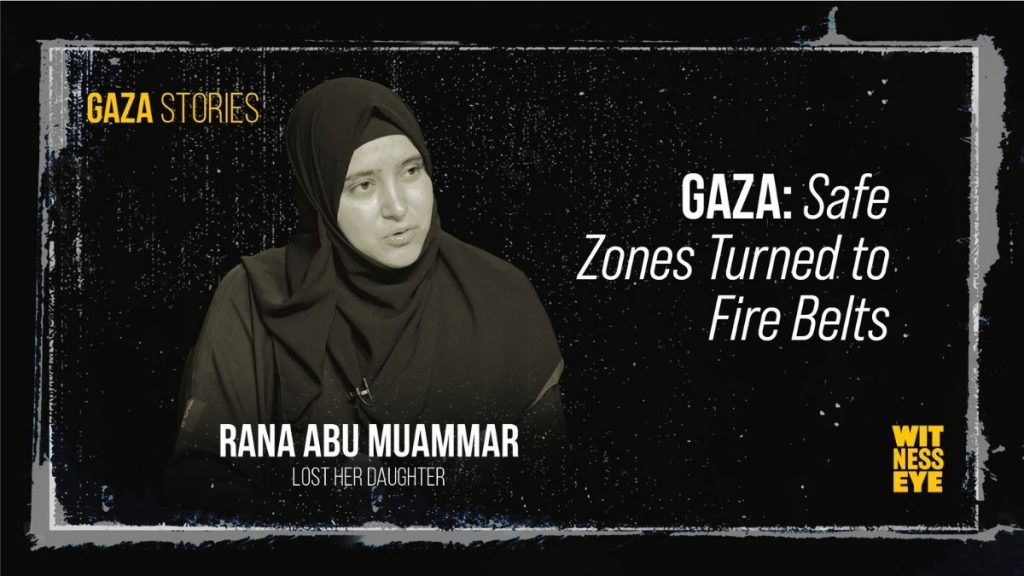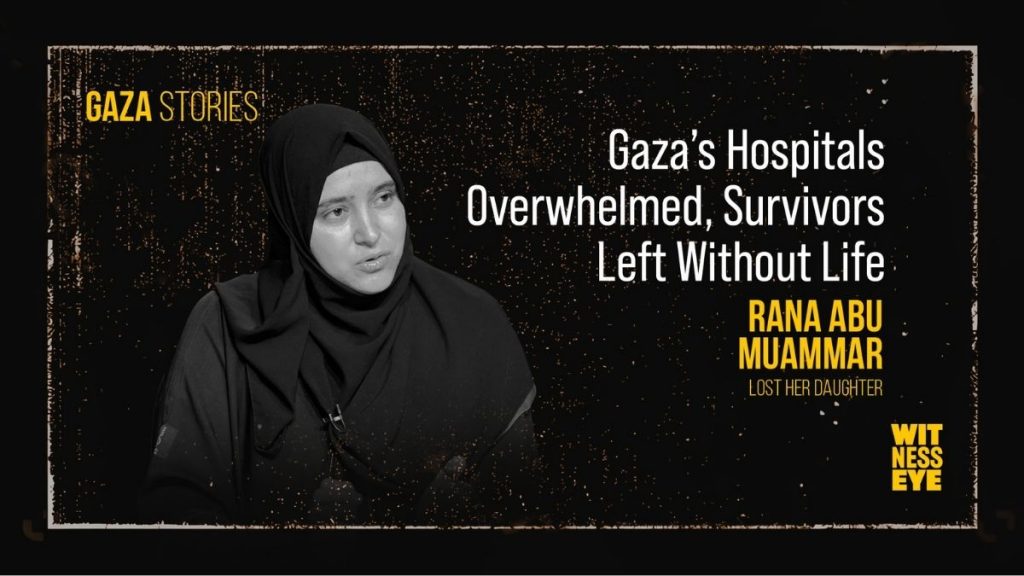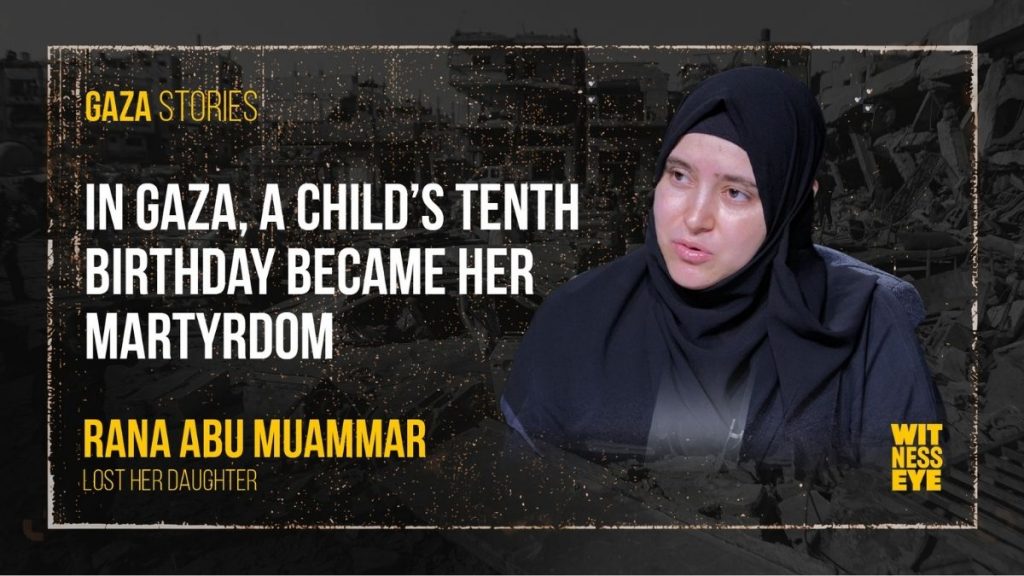
When we speak of Gaza Stories, we are not only recounting moments of loss but also carrying fragments of memory that refuse to disappear. Among these stories is that of Rana Abu Maammar, a young academic who returned to Gaza after years abroad, only to lose almost her entire family in what she describes as a war that turned into genocide.
Rana had built a life abroad with her husband and children. Yet, in 2023 she returned to Gaza to defend her PhD dissertation at the Islamic University. “I came at the end of July, planning to stay two months with my family,” she recalled. “I had not seen them properly in years because of COVID. I wanted time with them, to live again the atmosphere of home.”
It was supposed to be a season of joy — a homecoming, a defense of years of work, a reunion with parents, siblings, and her children’s cousins. But that decision to extend her stay, to allow her children to remain in Gaza until January, would intersect with history in the cruelest way.
Gaza: Safe Zones Turned to Fire Belts
On October 7, Rana and her family were awakened by the noise of bombardment. “My children had never heard this kind of bombing. My daughter Tala was only nine,” she said. “Her tenth birthday was in heaven.” As she described it, the early days were filled with fire belts — bombardments so heavy that the house shook and entire neighborhoods seemed to catch fire. Families like Rana’s sought safety by moving deeper into Khan Younis, believing the areas designated as “safe zones” by the occupying forces would protect them.
But as many Gaza testimonies now show, so-called safe areas became targets too.

Tala’s Last Words
In Gaza Stories, the voices of children echo most painfully. Tala, Rana’s daughter, struggled to make sense of the bombs. At first, she begged to leave Gaza and join her father abroad. But then something shifted.
“One day before the bombing, she told me, Mama, I don’t want to travel anymore. I want to be martyred and go to heaven.”
The words of children in Gaza — their play, their fears, their attempts to cope — are haunting. Rana recounted how Tala’s cousins would say, “We want to be martyred and go to heaven.” Tala, determined and headstrong, replied, “I’ll finish the Quran in heaven.”
The next day, December 20th, the family home sheltering sixty people was bombed.
Sixty people huddled inside three floors of concrete. The strike flattened it all. Thirty emerged lifeless, thirty others injured. Rana survived but with deep wounds to her face, hand, and leg. She still carries the scars.
Among the dead, she says: “My father was martyred … my mother … my brother Mansour … my brother Mohammed … my daughter Tala … my aunt … my uncle Alaa … my uncle Rami and his wife and his daughter … my aunt Um Yasser’s daughters … my aunt Hiyam’s daughters … all her grandchildren …”
Generations wiped out in a single moment.
“The Jews knew there were sixty people inside,” she said.
“They targeted us directly. Most of those who died were women and children.”
This testimony aligns with broader Civilian Impact Reports and Crimes Against Humanity documentation emerging from Gaza.
Identifying the Dead Through Remnants in Gaza
Perhaps one of the most unbearable parts of Rana’s Gaza Tribunal evidence lies in what happened after. Waking up injured, she demanded to see her daughter and her parents. Doctors and relatives told her they were “fine.” But she pressed, insisting on the truth. Finally, she was led to the morgue. “They showed me bodies, but their faces were unrecognizable. I had to identify my mother by her socks, the ones I had given her,” Rana said.
Her younger sister Aseel was missing. Later, a doctor identified only a forehead fragment as hers, based on a childhood scar. Rana could not accept it. “That night, I dreamed she came to me saying, I am alive, search for me.” The cruelty of war extends beyond death — it is the uncertainty, the disfigurement, the impossible task of recognition.

Gaza’s Hospitals Overwhelmed, Survivors Left Without Life
Rana describes Gaza’s hospitals during the bombing as overwhelmed and collapsing. “In one room, twenty people lay injured. There was no anesthesia, no proper medicine. They stitched my wounds while I was awake,” she recalled. Even when she was evacuated to Egypt, treatment was at her own expense.
“You pay thousands of dollars just to leave Gaza. Then you must pay for medicine, for surgery, for rent in a new country. Life starts not from zero, but from below zero.”
This testimony underscores the failures of International Humanitarian Law and the urgent need for accountability through Legal Accountability Cases.
“Physical survivors have no life,” Rana told us. “Each birthday of my siblings, I write: The second birthday of non-life.Because we are alive, but not truly living.” She remembers her father spoiling her children, her mother carrying them everywhere. “Even people would say, these are Ahlam’s children, not Rana’s. That is how much my mother loved them.” Today, her surviving son Ibrahim plays, but she says every smile carries an absence. Every gathering is filled with silence.

Documenting for Justice
This story is not just one of personal grief. It belongs to the Digital Evidence Archive of war crimes, to the collective record of War Crimes Documentation and Genocide Evidence Files that survivors like Rana insist must be preserved. As with Gaza Tribunal Reports and Eyewitness Testimonies, her voice joins the archive of resistance against erasure.
She reminds us that accountability is not optional. It is survival. It is why international justice and tribunals matter. Gaza Stories are stories of survival, of families torn apart, of children whose last words become eternal echoes. Rana’s voice joins others already documented — from Gaza’s Missing to Gaza Justice and Stories of Survival. Each of these testimonies builds a collective tribunal of memory.
They say: We were here. We lived. And the world must remember.
Hear the testimony of Rana Abu Maammar in her own words—a witness to war, exile, and resistance, carrying Gaza’s pain and the call for justice.
Published By Besa Witness Eye
Stay Connected with Witness Eye
Follow us on our official channels:
